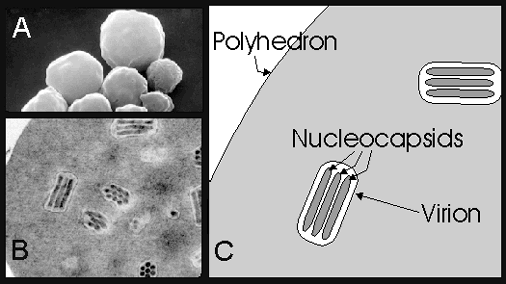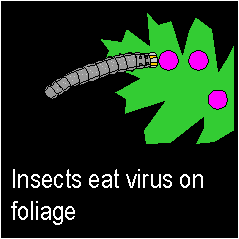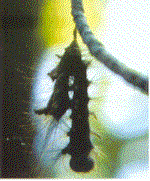|
|
BackgroundInsect-specific viruses can be highly effective natural controls of several caterpillar pest. Baculoviruses are pathogens that attack insects and other Arthropods. The viruses are extremely small (less than a thousandth of a millimeter across) and are composed of DNA that codes for genes needed for the virus to replicate. Since the genetic information is easily destroyed by exposure to sunlight an ineffective virion is protected by a protein coat called a polyhedron. (see image) They are obligate parasites so they have to be in a host to reproduce. Most Baculoviruses must be eaten by the host to produce a fatal infection. |


